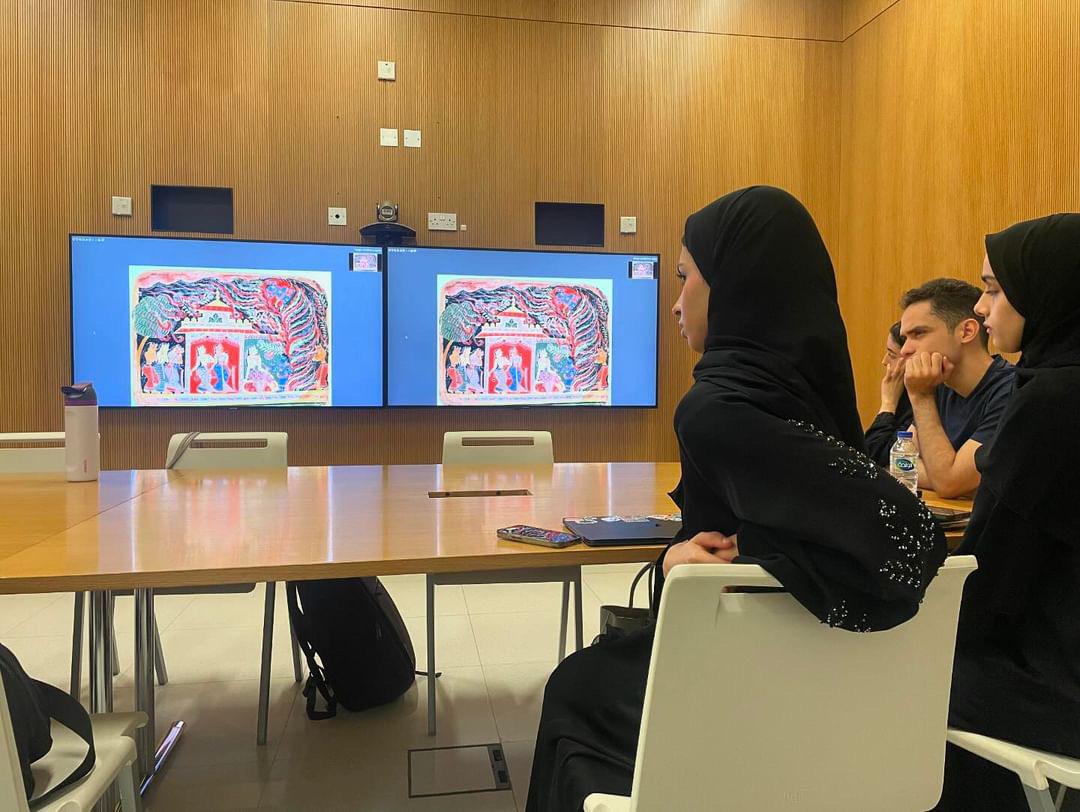Yale School of Art, NYU Abu Dhabi bridge cultures in new residency program
A new post-MFA residency program aims to expand artistic global perspective and creative practices across two distinct cultural landscapes.

Courtesy of Chinaedu Nwadibia
When Chinaedu Nwadibia ART ’22 left New Haven for Abu Dhabi, the first thing she noticed was the heat; conversely, as Majd Alloush NYUAD MFA ’23 made the journey from Abu Dhabi to New Haven, he immediately noticed its absence.
Nwadibia and Alloush were selected to engage in the pilot of the Post-MFA Residency Exchange Program between the Yale School of Art and NYU Abu Dhabi, also known as NYUAD. In the program, one recent graduate from each institution spends one academic semester on campus at the exchange university and is provided accommodations such as studio space and housing to further explore their craft.
Yale had previously announced a similar project in 2008, but it was later scrapped due to “irreconcilable differences,” as the News reported that year.
When asked what has occurred in the past 16 years for the project to finally come to fruition, Anoka Faruqee ’94, associate dean and professor of painting and printmaking at the Yale School of Art, said she cannot speak to the development of the past programming but describes the current opportunity as a unique outlet for cultural exchange.
The effort was resurrected following a trip Faruqee took to the United Arab Emirates with Kymberly Pinder GRD ’95, dean of the School of Art, and Nicole Freeman, director of development and alumni relations.
While there, Faruqee visited Dubai, Abu Dhabi and Sharjah, and toured performing arts facilities at NYU Abu Dhabi. After returning to New Haven, she and her peers discussed launching a pilot exchange program for recent alums.
“The art world that we are exposing our students to on a regular basis is sometimes limited to geography,” said Faruqee. “And the School of Art has been interested in travel and residency opportunities that are outside of a European context.”
Once each respective program commences, the artists have access to various shops, labs, lectures and programming and are expected to present a project exhibition.
Nwadibia, one of the first program participants, is a Nigerian and African American sculpturist and photographer, fond of injecting elements of her background into her work to illuminate the rich histories related to the African diaspora.
Upon arriving in Abu Dhabi just a few days ago, she embraced the change in culture, resources and weather with excitement.
“I’m interested in immersing myself in the libraries and archives available to me at NYUAD, being open to the ways in which new discoveries invite themselves into my practice,” Nwadibia said. “Conversely, I hope to leave a bit of Nigerian/Black Americana here to be contemplated, respected and resonated with.”
Nwadibia said she feels honored to have been selected for this venture and eagerly awaits future opportunities to share her experiences as the legacy of the program solidifies.
The other program participant, Alloush, is a printmaker and photographer. He shared a similar sentiment regarding his selection for the program.
“I can’t really describe the feeling, because it’s something that I’ve always wanted to do,” Alloush said. It’s a very small world in the United Arab Emirates, and I’ve always been involved in every event that happens around the idea of print and printmaking. It just feels really good to be able to teach and share my experience.”
Alloush began his career at NYUAD as a chemical engineering major but quickly garnered an ardor for printmaking due to its foundation in chemical processes. He graduated in 2018 and, following graduation, worked at the American University of Sharjah as a laboratory specialist managing art facilities. However, he has always sought to pursue a career in academia and now works part-time as an adjunct faculty instructor at the university.
He dubs his participation in the post-MFA program as “very experimental” and is eager to merge his abstract “backwards” approach with New Haven’s distinct environment.
“I don’t really stick with the rules of printmaking,” said Alloush. “But sometimes you have to, so I gain my inspiration from collaborating with the environment that I am in and my documentation of space.”
Faruqee hopes that this opportunity will allow artists to be inspired and influenced by the artists, issues and ideas around them. She believes it is crucial for institutions such as Yale to invest in internationalization efforts.
“This is the first time [Yale] has had a program, as far as I can remember, where somebody has had a studio space on campus that isn’t a student,” she said. “So the fact that [Alloush] is an international fellow is important because it brings other perspectives and viewpoints to broaden our idea of what art is and who are the visible artists.”
She believes that most people, including herself, would be more impacted by art if they saw images firsthand as opposed to via social media and the internet.
She believes that when art’s primary form of consummation is through mediated technology, it is much more disembodied.
“I realized that my frame of reference for artists can be quite narrow, and so doing these trips and learning about other artists is really important for me as a teacher. And so we wanted to bring a smaller version of that experience to a couple of recent alums to continue that type of work.”
Faruqee said she anticipates the post-MFA program becoming a long-term collaboration. She hopes the School of Art can offer a fellowship that expands students’ frame of reference and knowledge.
The Yale School of Art was founded in 1869.







